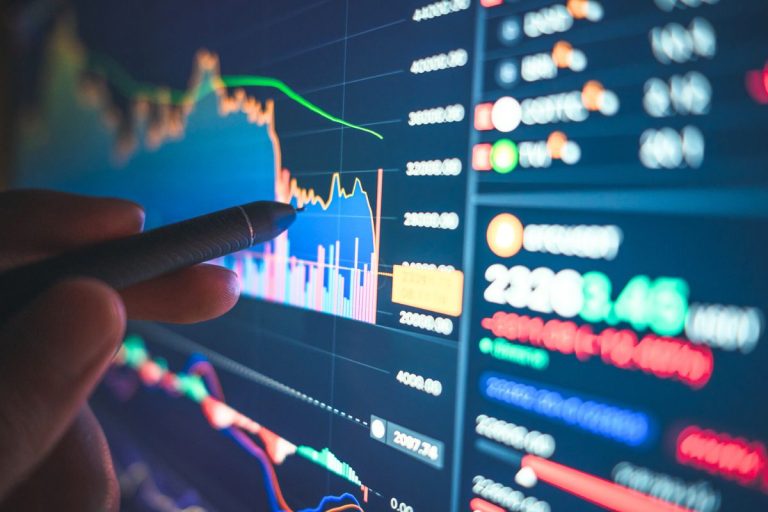It was one of those hectic trading days that remind you just how fragile the financial markets can be. After a high-energy Trump rally that many expected to breathe new life into crypto and stocks, investors were instead met with a sharp slide in prices, fueling concerns over mounting tariffs and escalating market volatility. I’ve experienced similar jitters in my own investments, and these fluctuations always serve as a cautionary reminder of the risks involved.
Bitcoin Stabilizes after Steep Decline
Earlier in the day, Bitcoin took a significant hit—dropping by about 5.6% to roughly $74,425, its lowest point since a landmark period after an election that brought Trump back into the crypto spotlight. By mid-afternoon in New York, Bitcoin had stabilized near the $79,000 level, offering a glimmer of hope to those watching their assets fluctuate wildly. I recall a nerve-wracking moment when I was glued to my portfolio during a sharp dip, only to be relieved by a modest rebound that restored some investor confidence.
Meanwhile, smaller tokens like XRP, Solana, and Cardano also rebounded after suffering early losses, underscoring the unpredictable nature of the digital assets market.
Tariff Fears and Global Market Turbulence
The turbulence in the digital realm was far from isolated. Investors around the globe are now wrestling with the macroeconomic implications of the steep tariffs imposed by President Trump on key trading partners. These aggressive policy moves have already erased trillions of dollars in global equity value, leaving Asian and European markets reeling, while U.S. indices, including the S&P 500, experienced dramatic swings—initially plummeting by 4.7% before recovering with a 3.4% gain in early trading. The day’s volatility serves as a stark reminder of how sensitive the global economy is to sudden policy shifts.
Growing Demand for Downside Protection
Amid this chaos, a notable trend emerged: the surge in demand for downside protection. Data from leading trading platforms show that approximately $1.5 billion in bullish crypto positions were liquidated within a 24-hour window—the highest this year. Sean McNulty, a prominent expert in digital asset derivatives at FalconX, pointed out that options data revealed strong buying pressure for put options. In particular, the open interest for put options with a strike price of $70,000 on Bitcoin now exceeds that of any other expiration, highlighting the growing need for risk management strategies among investors.
This rush towards protective measures signals the rising investor uncertainty about further declines and reflects the broader trend of cautious optimism across the trading community.
Crypto as a Leading Indicator of Risk
Despite the turbulence, some industry voices urge a balanced perspective. Julia Zhou, COO at a major crypto market maker, noted that crypto has traditionally been a leading indicator for broader risk assets. The strong correlation observed between cryptocurrencies and the tech-heavy Nasdaq 100 since the Covid-19 pandemic suggests that the current trends might well extend beyond digital assets alone.
Matthew Graham, CEO of Ryze Labs, summed up the sentiment perfectly: “Crypto entered 2025 expecting a favorable wind from Trump, but we got hit by a category 5 storm instead.” His candid remark resonates with many in the industry, highlighting the stark reality of navigating an environment where macroeconomic pressures and political decisions can abruptly alter market dynamics.
In the end, today’s events serve as a powerful reminder of the inherent unpredictability in the world of crypto and stocks. As traders recalibrate their strategies and seek better market stability, the quest for investment security remains a challenging, yet essential, aspect of navigating these volatile times. Whether you’re a seasoned investor or just starting out, moments like these underscore the importance of staying informed and prepared in an ever-changing financial landscape.


